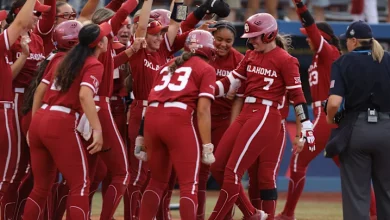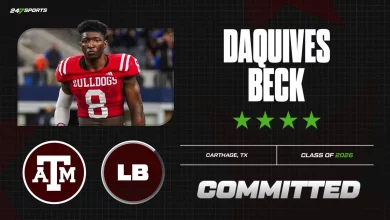OU softball’s transfer departures could impact their chances at the 2026 Women’s College World Series by potentially weakening their roster depth and experience crucial for postseason success.

The Oklahoma Sooners softball program has long been a dominant force in NCAA Division I softball, consistently competing at the highest levels and aiming for national championships. Central to their sustained success has been a combination of top-tier recruiting, excellent player development, and strategic roster management. However, in recent years, the transfer portal has become a significant factor in shaping team compositions, offering both opportunities and challenges. As the 2026 Women’s College World Series (WCWS) approaches, understanding how OU softball’s recent transfer departures might influence their chances is critical, especially given the importance of roster depth and experience in postseason success.
The Evolution of College Softball Roster Dynamics
Before delving into the specifics, it’s essential to recognize how modern NCAA softball teams operate. The transfer portal has revolutionized recruitment and team building, allowing programs to supplement their rosters with experienced players who have already faced high-level competition. While this practice can enhance team strength rapidly, it also introduces some volatility, as players leave for various reasons—be it academic, personal, or seeking more playing time.
For programs like Oklahoma, which have historically relied on recruiting elite high school prospects and developing talent internally, the influx of transfers can be both an asset and a potential risk. The key to sustained success lies not just in acquiring talented players but in maintaining cohesion, experience, and depth—factors that become especially vital in the high-pressure environment of the postseason.
The Significance of Roster Depth and Experience in the WCWS
The Women’s College World Series is the pinnacle of college softball, demanding not only skill but also resilience, adaptability, and mental toughness. Teams that excel typically possess:
Deep pitching staffs: To withstand multiple games over a few days, teams need several reliable pitchers capable of handling different scenarios.
Experienced players: Veterans who have navigated high-stakes postseason environments can provide leadership and stability.
Versatile lineups: Flexibility in batting order and defensive positions enables teams to adapt to various opponents and game situations.
Roster depth and experience are often the differentiators between championship-winning teams and those that fall short. Therefore, any significant departures—especially from key players—could have ripple effects on Oklahoma’s prospects for their anticipated 2026 WCWS appearance.
Analyzing the Transfer Departures from OU Softball
1. Nature and Scale of Departures
In recent seasons, Oklahoma has seen some of its roster members transfer out. While the exact number and profiles of these players vary, the overarching trend involves the loss of experienced pitchers, offensive contributors, and leadership figures. Such departures may have been motivated by various factors: seeking more playing time, academic pursuits, personal reasons, or even style fit.
2. Impact on Pitching Depth
Oklahoma’s success has often been anchored by its formidable pitching rotation, with several pitchers capable of shutting down top offenses. Losing one or more of these key contributors can significantly weaken the team’s depth. For example, if a primary starter departs, the team’s reliance on younger or less experienced pitchers increases, which can lead to inconsistency during the high-stakes postseason.
Moreover, the physical and mental demands of postseason play mean teams need multiple reliable arms. If the transfer departures diminish this depth, Oklahoma might face challenges in maintaining peak performance across multiple games.
3. Offensive and Defensive Leadership Losses
Experienced players often serve as team leaders, helping younger athletes navigate the pressures of postseason play. Departures of such veterans could impact team chemistry and confidence, especially if replacements lack equivalent experience.
Additionally, offensive powerhouses or versatile utility players leaving the roster can reduce scoring options and lineup flexibility. This could lead to increased reliance on freshmen or less proven players, raising the risk of offensive stagnation during critical moments.
How These Departures Could Specifically Affect the 2026 WCWS
1. Postseason Readiness and Mental Toughness
One of the most vital aspects of a successful WCWS run is mental resilience. Veteran players who have previously competed in postseason environments contribute invaluable composure and strategic insight. Their absence might leave younger players to shoulder more responsibility, potentially impacting team performance during clutch moments.
2. Depth During the Tournament
The WCWS is a grueling series of games, often requiring teams to navigate injuries, slumps, or unexpected challenges. Reduced roster depth due to transfers can limit Oklahoma’s ability to rotate pitchers, replace injured players, or adapt game plans. This constraint might force the coaching staff to overextend certain players, increasing fatigue and the risk of mistakes.
3. Competition-Level Challenges
Teams with rich experience and depth tend to adapt better to the unpredictable nature of the tournament—be it weather conditions, officiating, or opponent strategies. If Oklahoma’s roster becomes thinner or less seasoned, they could be more vulnerable to upsets or challenging matchups.
4. Recruiting and Development Implications
While transfers can fill immediate gaps, over-reliance on new or unproven players might impact team cohesion. The 2026 roster’s overall experience level could be lower than previous championship teams, requiring Oklahoma to emphasize player development and chemistry-building efforts.
Potential Mitigation Strategies
1. Emphasizing Player Development
Oklahoma’s coaching staff, led by Patty Gasso, has a track record of developing talent and preparing players for postseason pressure. By focusing on refining the skills and mental toughness of younger players, the team can compensate for some of the loss in experienced personnel.
2. Strategic Recruiting and Transfer Acquisition
Proactively recruiting high-impact transfer players to fill voids in pitching, offense, or leadership roles can help rebuild depth quickly. Prioritizing players with postseason experience or SEC backgrounds can add valuable grit and familiarity with high-pressure environments.
3. Cultivating Team Chemistry and Leadership
Fostering a culture of resilience, accountability, and camaraderie can help bridge experience gaps. Leaders within the team—whether returning veterans or emerging young stars—must step up to maintain focus and confidence.
4. Flexibility in Game Strategy
Leveraging versatile players and adopting adaptable game plans can mitigate the effects of personnel changes. This includes strategic pitching rotations, flexible batting orders, and situational substitutions.
Broader Context: The Landscape of NCAA Softball
The competitive landscape of NCAA softball is evolving rapidly. Other programs are investing heavily in recruiting and transfer portal strategies, often fielding highly experienced and deep rosters. In this context, Oklahoma’s roster stability and depth will be critical factors influencing their ability to compete at the highest level in 2026.
While Oklahoma has historically maintained a strong pipeline of talent and a winning culture, the transient nature of roster composition means they must continuously adapt. The transfer departures, if not managed effectively, could temporarily weaken their standing, but strategic planning and internal development can mitigate potential setbacks.
Long-Term Outlook and Implications
1. Building for the Future
Transfers often serve as bridges to strengthen current teams and develop future stars. The lessons learned from these departures can inform Oklahoma’s recruitment and development strategies leading up to 2026.
2. Sustaining Competitive Edge
Maintaining a balance between experienced veterans and emerging talent is crucial. Oklahoma’s coaching staff will need to identify and cultivate internal players who can step into leadership roles and perform under pressure.
3. The Role of Recruitment and Development in 2024-2025
Recruiting top high school prospects and integrating transfer players will be vital in replenishing roster depth. Success in these areas can ensure that Oklahoma remains a favorite for the 2026 WCWS.
In summary, OU softball’s transfer departures pose potential challenges for their quest to win the 2026 Women’s College World Series. Reducing roster depth and experience could impact their ability to perform consistently in the postseason, especially given the high-pressure, multi-game format of the WCWS. However, with strategic internal development, targeted recruiting, and fostering a resilient team culture, Oklahoma can mitigate these risks.
The program’s rich history of excellence and adaptability provides optimism that they will remain competitive. While the departures may introduce some hurdles, they also present opportunities for growth, innovation, and fresh leadership. Ultimately, Oklahoma’s success in 2026 will hinge on how effectively they manage their roster transitions, develop emerging talent, and execute their championship vision amid an evolving NCAA softball landscape.









